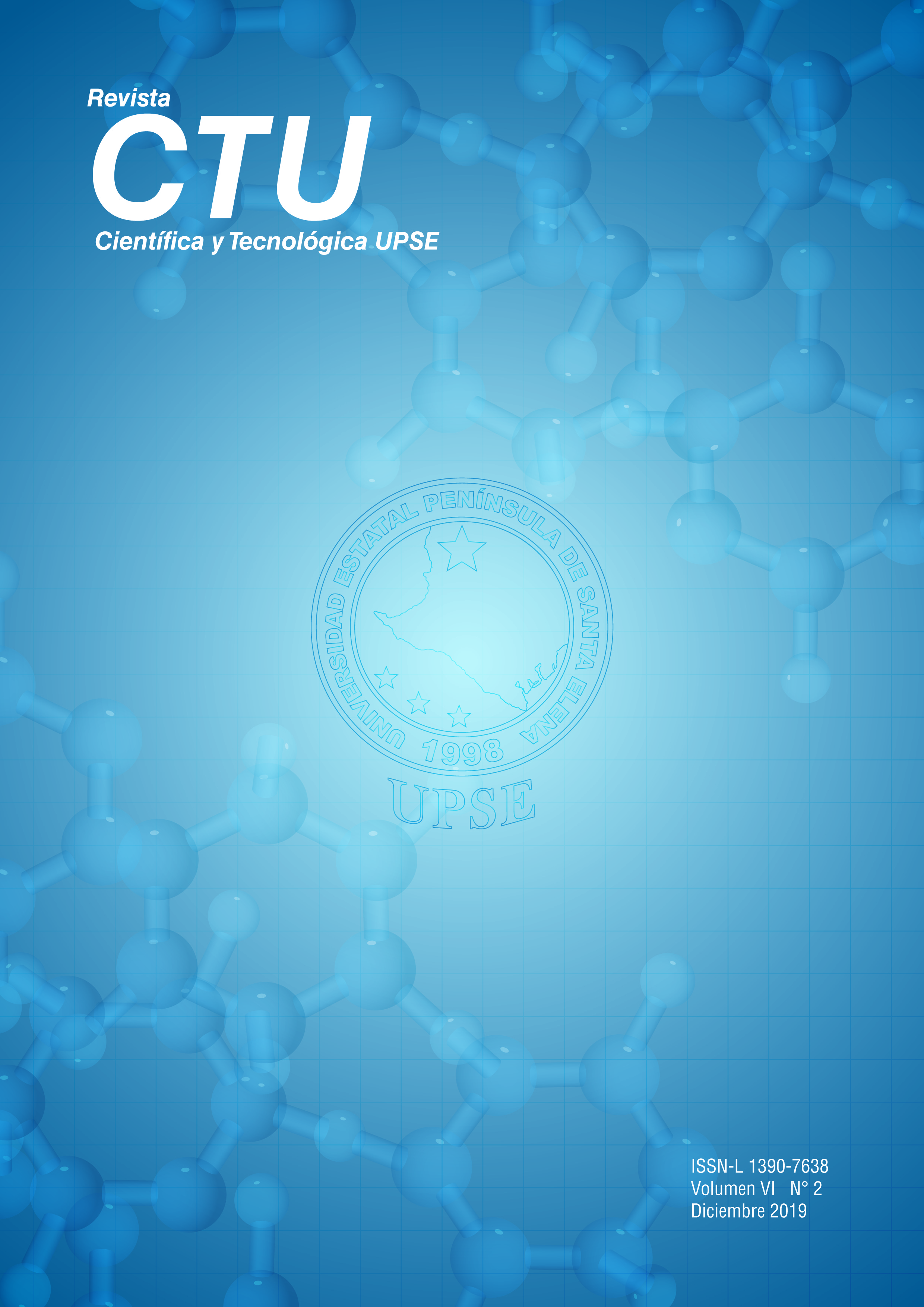Efecto de la Boldenona sobre el rendimiento productivo de cuyes
DOI:
https://doi.org/10.26423/rctu.v6i2.423Palabras clave:
Cuy, engorde, producción, Boldenona, ganancia de peso, conversión alimenticiaResumen
El uso de anabólicos como promotores de crecimiento en producción de especies menores ha resultado rentable demostrado por investigaciones previas realizadas a nivel nacional e internacionalmente, para lo cual se establece el presente ensayo en la provincia de Santa Elena. Para esta investigación se establecieron 4 tratamientos con diferentes dosis de boldenona definidos como: T1= 0,025ml, T2 = 0,035ml, T3 = 0,045ml y T4 = testigo; cada uno con 7 repeticiones. El régimen alimenticio fue a base de alfalfa como forraje fresco dosificado según las etapas de producción de los cuyes. Las variables a evaluar en este ensayo son el consumo de alimento (CA), ganancia de peso (GP), índice de conversión alimenticia (ICA) y la relación beneficio/costo por cada gramo de carne en pie producida, las mismas que fueron evaluadas de manera semanal. En base a los resultados obtenidos se destaca que el mejor tratamiento respecto a las variables de GP y CA es el T2 en donde se alcanzaron valores de 1053,42g/ff/semanal y 17,82g/semanal por tratamiento; el mejor valor de ICA se obtuvo en el T4 con 3,9. El mejor tratamiento en cuanto al costo por gramo de carne en pie producido es el T1 (0,025ml) con un costo de $0,02g de carne por semana. Finalmente, las variables evaluadas no presentan diferencias estadísticas significativas, pero en la práctica las ganancias de peso e índices de conversión alimenticia que se obtuvieron representan rentabilidad productividad para los sistemas de explotación de estas especies.
Descargas
Referencias
Alliaga, L., Moncayo, R., Rico, E., & Caicedo, A. (2009). Producción de cuyes.Lima-Peru: Universidad Catolica Sedes Sapientiae.
Banda, J. (2013). Efecto del Producto Anabólico no Hormonal MK471 en el Comportamineto Productivo en Cuyes en Crecimiento (Cavia porcellus) de dos semanas de nacidos.Arequipa: UNIVERSIDAD CATÓLICA DE SANTA MARÍA.
Cahuana, C. (2013). Crianza de cuy. Retrieved Junio 23, 2018, from http://crianzadecuye.blogspot.com/2013/03/manual-de-crianza-de-cuyes.htm
Carbajal, M. (2015). Utilización de Zeramec y Boldemec como Promotores de Crecimiento en Cuyes Mejorados,.Riobamba: ESPOCH.
Chalán, M. (2016). Utilización de Diferentes Niveles de un Promotor de Crecimiento en Cavia porcellus (cuyes) en la Etapa de Crecimiento y Engorde. Riobamba: ESPOCH.
INSTITUTO NACIONAL DE METEOROLOGIA E HIDROLOGIA. (2016). Anual, Boletín Climatológico. Boletín de vigilancia climática del Ecuador. Quito, Pichincha, Ecuador.
León, J. (2016). Comportamiento Productivo de Cuyes Alimentados con Forraje y Suplemento más Aditivo de Clorohidrato de Ractopamina.Guayaquil: UINIVERSIDAD DE GUAYAQUIL.
López, C. (2003). Explotación Tecnificada de cuyes. Peru: CORPOICA.
Olivo, S. (1989). Evaluación del comportamiento productivo y reproductivo del cuy (Cavia porcellus) criollo mejorado Conocoto –Pichincha. Universidad Central de Quito, Facultad de Ciencias Agrícolas, Tesis Ing. Agr., 78.
Saturnino, A. Q. (2015). Manejo técnico de la crianza de Cuyesen la Sierra del Peru.Peru: Caritas del peru.
Publicado
Número
Sección
Licencia
El titular de los derechos de autor de la obra, otorga derechos de uso a los lectores mediante la licencia Creative Commons Atribución-NoComercial-CompartirIgual 4.0 Internacional. Esto permite el acceso gratuito inmediato a la obra y permite a cualquier usuario leer, descargar, copiar, distribuir, imprimir, buscar o vincular a los textos completos de los artículos, rastrearlos para su indexación, pasarlos como datos al software o usarlos para cualquier otro propósito legal.
Cuando la obra es aprobada y aceptada para su publicación, los autores conservan los derechos de autor sin restricciones, cediendo únicamente los derechos de reproducción, distribución para su explotación en formato de papel, así como en cualquier otro soporte magnético, óptico y digital.












